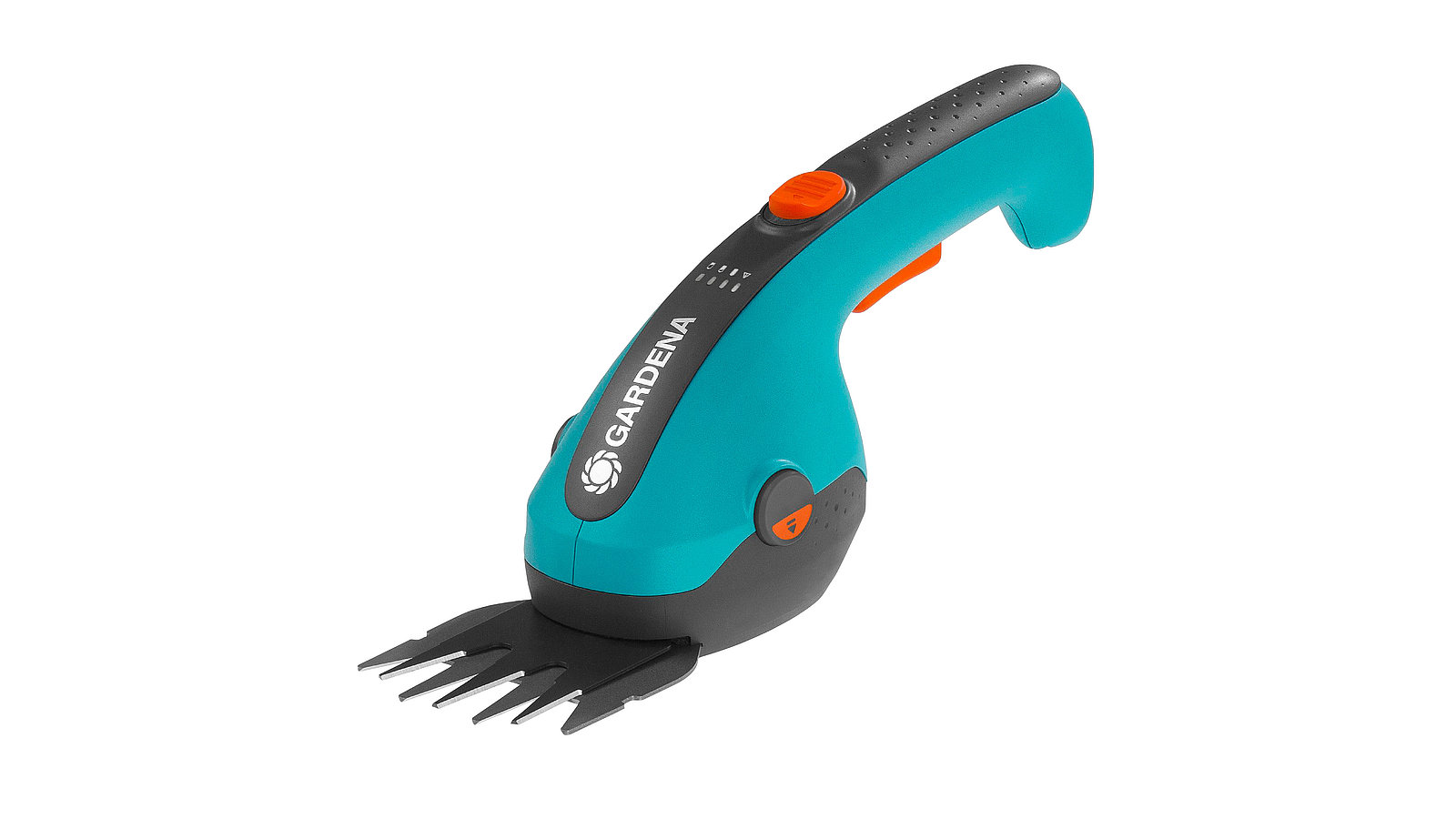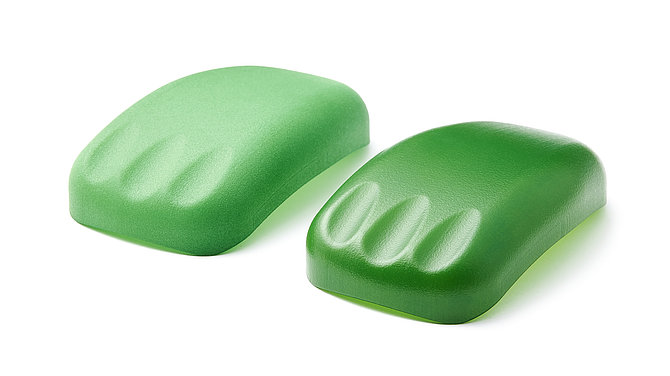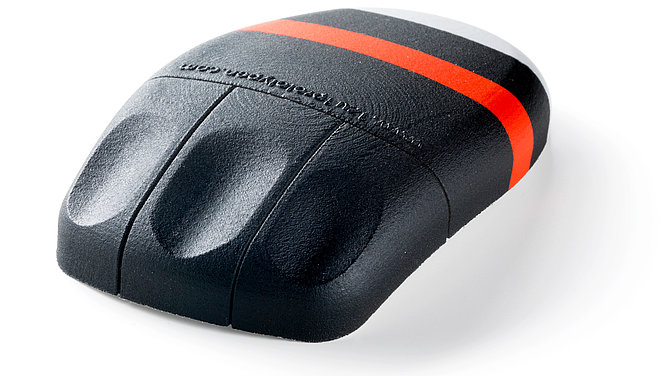As the first ever cordless lawn edger, the „Accu Grande“ from Gardena revolutionized gardening in 1973. Founded in 1961, the Ulm-based company is now part of the Husqvarna Group. Its system solutions have made Gardena synonymous with innovative gardening equipment and generate annual sales of around EUR 800 million. As for its cordless grass shears – even a classic design needs a makeover from time to time.
Fritz Laible is responsible for this bestseller’s most recent update at Gardena. He is a designer, a native of Swabia and an experienced professional who stays abreast of the latest technological developments in 3D printing via trade shows and the specialist media. In other words: He knows exactly what’s going on – and precisely who has the skills he needs. Which explains why he has been working with 1zu1 for over 15 years. Accordingly, the Dornbirn-based high-tech company was asked to use its selective laser sintering (SLS) process to manufacture the housing parts for the prototype of Gardena’s latest incarnation of its cordless grass shears.
We talked to Fritz Laible and 1zu1’s 3D printing manager, Markus Schrittwieser, about the challenges involved in the project.
Mr. Laible, what were your requirements?
Fritz Laible: The project was based around the relaunch of the cordless grass and shrub shears. As far as the technology was concerned, we were able to rely on our proven components. We practically redesigned the new case around the inner workings. So we needed a prototype builder to deliver the case in perfect quality in terms of look and feel. The market launch date is always set in stone at an early stage in these projects. But the requirements increased along the way and so, as is usually the case, everything had to be done quickly.
Markus Schrittwieser: And we can move quickly as long as the data provided by the customer is in order, which is the case with Gardena thanks to their many years of experience in 3D design.
How quickly did it all happen?
Schrittwieser: We supplied parts for two prototypes, one with a fixed handle and one with a handle whose angle can be adjusted. In total, we 3D printed 29 different parts using selective laser sintering and painted the surfaces. All the parts were ready within five working days.
Laible: This is also the reason why we chose 1zu1. When it comes down to it, we have to be able to rely on the results. What I really don’t like is a „nothing achieved with little effort“ approach. The parts need to fit well for assembly, look good and feel equally good when handled.
Which areas of production are decisive in terms of achieving this?
Schrittwieser: In this project, for example, we had control elements that were composed of two parts. This means that, when printing, you have to ensure that both parts have the same orientation, i.e. flat or lying on their side. Otherwise, due to the layered construction the parts will no longer fit precisely, even with rework.
The material is polyamide and its mechanical properties are very close to those of injection-molded series parts. The SLS printing process also results in a surface that is not overly smooth, but rather pleasantly firm.
What happens after printing?
Schrittwieser: After removing the powder, the parts are shot-peened, cleaned and measured. The next step is the surface treatment. In this case we painted the parts dark gray, turquoise and orange. At this stage, care must be taken to avoid shadow gaps, for example. The paint layer can be up to a tenth of a millimeter thick. This must be taken into account in the design to ensure that the fit does not suffer.
Laible: The painting once again demonstrated the quality of 3D printing. When high-end technology is used, as it is at 1zu1, the edges and contours are not distorted.
Are there alternatives to painting?
Schrittwieser: Yes. We can also dye the starting material. However, this is time-consuming and therefore only profitable with larger quantities.
What will Gardena do with the components?
Laible: After assembly – which, as expected, also went smoothly – the prototypes were put through their paces by our product design, product management and quality assurance departments. And because mass-produced parts are naturally not yet available at this point, Marketing needs the prototypes to take photos for catalogs and packaging, since these things always have long lead times. This is yet another way in which near-series prototypes help to decrease the time-to-market.
Fritz Laible is a design engineer at Gardena in Ulm. Markus Schrittwieser is the production manager at 1zu1 in Dornbirn. The interview was conducted by Werner Sommer; photos by Darko Todorovic.

![[Translate to English:] Selective Laser Sintering (SLS)](/fileadmin/_processed_/e/c/csm_1zu1-Ameise-Header_b3d4651210.jpg)

